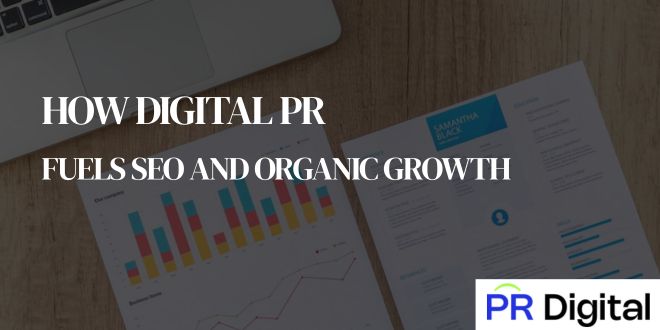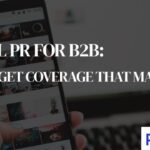

How Digital PR Fuels SEO and Organic Growth
Scroll back a decade and the path to page-one visibility was mostly a technical grind—optimize title tags, pepper in keywords, earn a few directory links, and hope for the best. Today that playbook looks painfully thin. Audiences crave stories, journalists want data they can cite, and search engines have grown smart enough to reward brands that are talked about naturally across the web.
Digital PR now sits at the center of that modern mix. By blending the storytelling craft of traditional public relations with the reach and measurement precision of digital marketing, Digital PR turns brand chatter into organic search power.
What Digital PR Really Means for SEO
From Press Releases to Shareable Stories
Traditional PR leaned heavily on press releases and one-off coverage. Digital PR still values earned media but expands the canvas: interactive data pieces, thought-leadership articles, expert quotes, social initiatives, and podcasts all count toward the same goal—credible mentions in places people actually read. Each mention is more than feel-good publicity; it becomes a crawlable, indexable signal that search engines use to gauge authority.
Bridging the Gap Between Brand and Search Engine
Google’s algorithm has matured from counting links to understanding entities—the who, what, and why behind a brand. When respected publishers cite your company, they help a search engine connect those dots. That bridge lifts topical authority, boosts trust, and ultimately improves keyword rankings for pages you haven’t even optimized yet. In other words, Digital PR shortens the distance between brand awareness and organic reach.
The SEO Domino Effect of a Well-Executed Digital PR Campaign
Authoritative Backlinks That Search Engines Trust
A single backlink from a Tier-1 publication can outweigh dozens of lesser citations. That’s because major outlets have rigorous editorial standards, strong domain authority, and expansive readership. When they link to your site:
- Google interprets the link as a vote of confidence.
- Crawl bots revisit your pages more frequently, speeding up indexation of new content.
- Referral traffic from an engaged audience arrives with metrics—time on page, low bounce rate—that reinforce SEO signals.
Brand Mentions and Entity Recognition
Even unlinked mentions move the needle. Natural Language Processing allows engines to recognize brand names and co-occurring keywords. As mentions accumulate, Google’s Knowledge Graph fills in the blanks, associating your brand with industry topics, products, and thought leadership themes. Rankings for semantically related queries often improve as a by-product.
Engagement Signals That Boost Relevancy
Digital PR campaigns tend to spark social shares, comments, and inbound visits. Those users spend time reading a data study, watching an explainer video, or scrolling through an interactive map. Engaged behavior sends relevance cues—dwell time, scroll depth—that layer on top of link authority. It’s the domino effect in action: storytelling drives engagement, engagement feeds SEO signals, and SEO wins pull in even more traffic.
Building a Digital PR Strategy Geared Toward Organic Growth
Start With Data, Not Assumptions
Successful campaigns rarely begin with “What cool thing can we say?” They start by mining data: proprietary stats, customer surveys, or publicly available government numbers. Data sets act as raw material for stories that journalists actually want. Before drafting a headline, ask: does this insight surprise, confirm, or challenge something meaningful in the industry?
Craft Stories Journalists Actually Want
Think of reporters as time-starved curators. They need:
- A clear, timely angle that dovetails with their beat.
- Credible evidence—original data, expert commentary, or compelling human anecdotes.
- Ready-to-use assets such as charts, tables, or high-resolution visuals.
Package those elements up front, and your pitch shifts from “please feature us” to “here’s a resource that will help your readers.”
Amplify Through the Right Channels
Earned media is the engine, but amplification is the fuel additive. Once a story lands:
- Promote the coverage on owned channels—blog, newsletter, social—to extend its lifespan.
- Use paid social micro-budgets to nudge high-value audiences toward the article.
- Encourage internal subject matter experts to comment and share, adding credibility while widening reach.
Each amplification loop creates more touchpoints, sparking additional mentions and links that feed back into search performance.
Measuring Success—What Matters Beyond Vanity Metrics
SEO KPIs to Watch
Digital PR can feel intangible if you only track impressions. Layer in search-focused metrics to see the real impact:
- Growth in referring domains and link quality (Trust Flow, Domain Rating).
- Ranking improvements for target keywords and related topical clusters.
- Increase in non-branded organic traffic and click-through rates.
- Faster indexation times for new content following major coverage.
PR Metrics That Complete the Picture
Organic gains often lag a few weeks behind a campaign, so short-term PR metrics help gauge momentum:
- Total media placements and average domain authority.
- Social shares and engagement per placement.
- Sentiment analysis from article comments and social chatter.
Cross-referencing these numbers with your SEO dashboard paints a fuller picture of brand authority in both the human and algorithmic sense.
Common Pitfalls and How to Dodge Them
Chasing Links Over Relevance
A link from an irrelevant site can do more harm than good. Search engines notice topical mismatch and may discount or even penalize forced placements. The fix is simple: vet every opportunity for relevancy first, authority second, and link attributes third. If the audience doesn’t overlap with your buyer persona, move on.
This is often done by folks who favor scale over human interaction, using AI too heavily in digital PR.
Neglecting the Technical SEO Foundation
Digital PR can drive a surge of traffic, but that wave will crash if your site loads slowly, serves broken pages, or lacks structured data. Before launching a campaign, run an audit: ensure crawlability, optimize Core Web Vitals, and map out logical internal links from new coverage pages to key conversion URLs. Think of technical SEO as the runway—without it, your PR plane never fully takes off.
Final Thoughts
Digital PR is not a bolt-on tactic; it’s the connective tissue between storytelling and search visibility. By earning authoritative coverage, sparking authentic engagement, and feeding rich signals into search algorithms, your brand gains the sort of compound interest that traditional link building rarely matches.
When you weave data-driven narratives and meticulous outreach into a solid technical foundation, organic growth becomes more than a vanity metric—it becomes the natural outcome of being genuinely useful and consistently cited in the places your audience trusts.
- Lessons Learned From a Failed Digital PR Campaign - December 4, 2025
- 5 Brands Crushing It With Digital PR (And What You Can Learn From Them) - December 2, 2025
- 10 Tools Every Digital PR Pro Should Use - November 27, 2025



